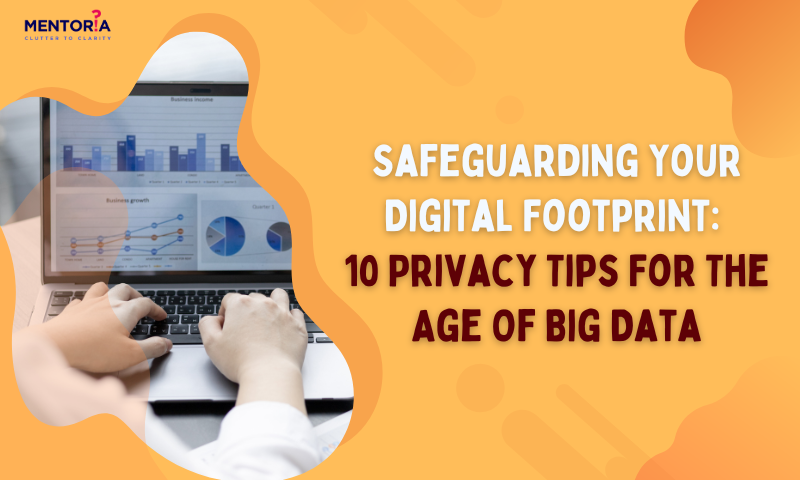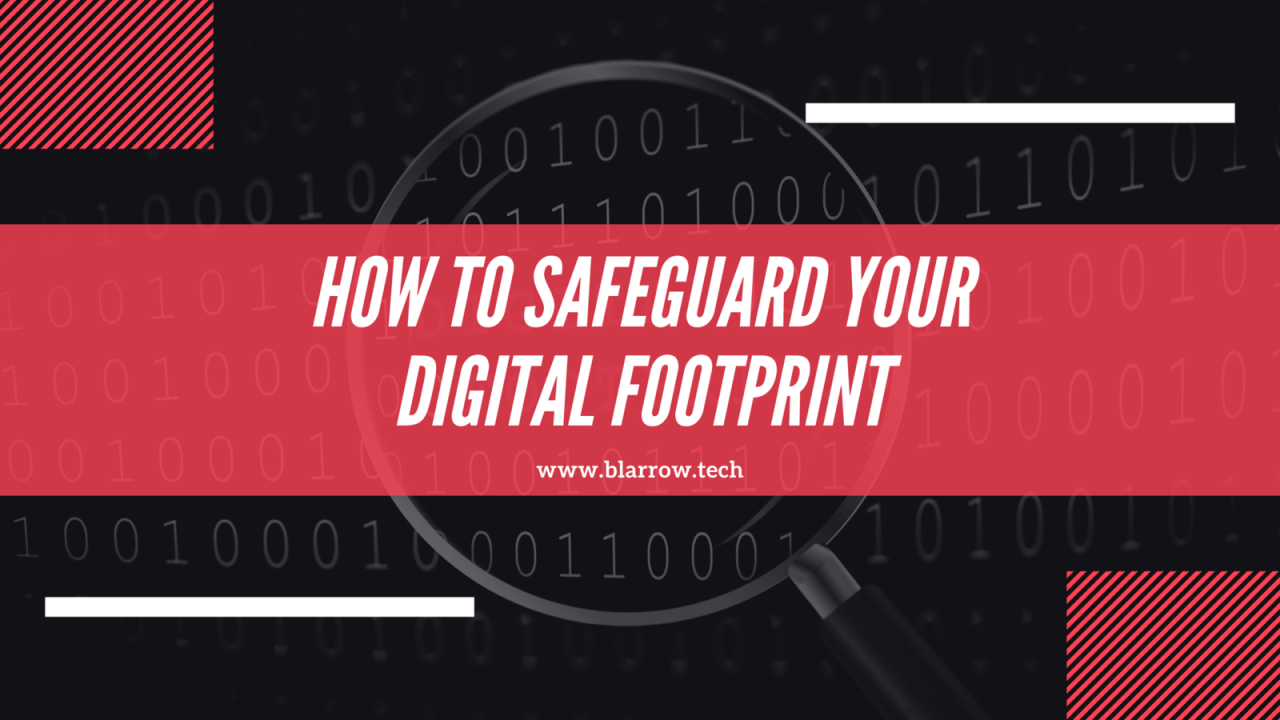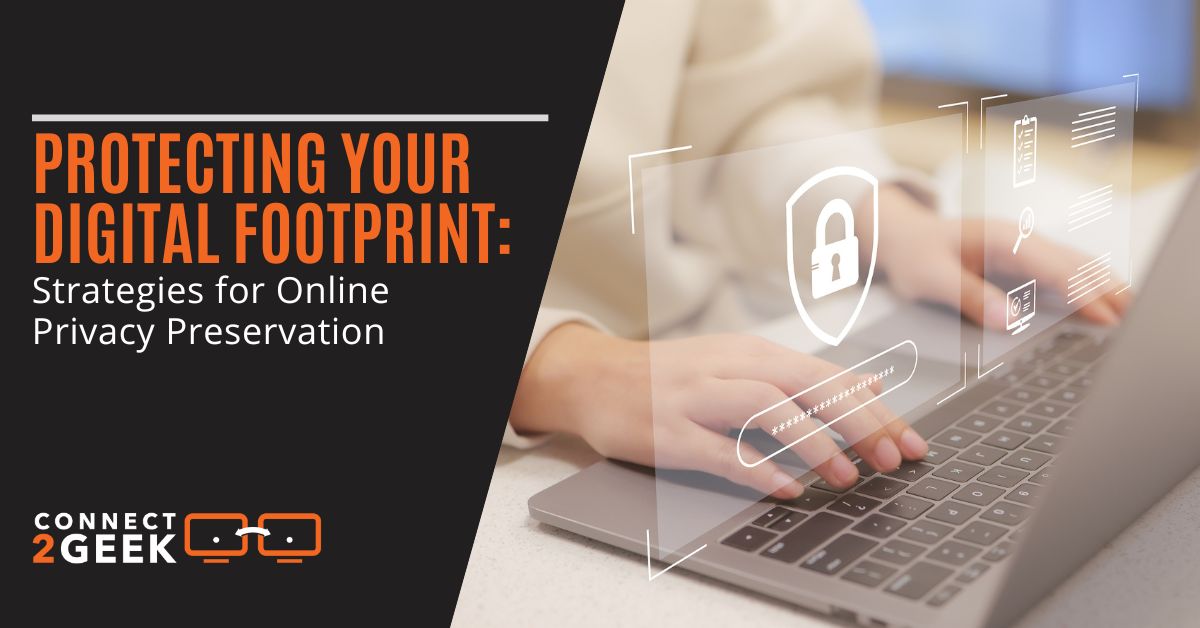Privacy tips for protecting your digital footprint: Safeguarding Your Online Presence

In today's digital age, our online activities leave behind a trail of information known as a digital footprint. This footprint, composed of our interactions and data, can have lasting consequences if not protected properly. Let's delve into the essential tips for safeguarding your digital presence and maintaining your privacy online.
Introduction to Digital Footprint
A digital footprint refers to the trail of data left behind by an individual's online activity. This includes interactions on websites, social media platforms, online purchases, and more.
It is crucial to protect your digital footprint as it can have long-lasting consequences on your online reputation, privacy, and even security. Unauthorized access to your digital footprint can lead to identity theft, cyberbullying, or targeted advertising.
Examples of How Digital Footprints are Created
- Posting on social media: Every post, comment, like, or share adds to your digital footprint.
- Online shopping: Your purchase history, payment details, and browsing habits create a digital trail.
- Internet searches: Search engines track your queries and browsing history to personalize ads and search results.
- Location tracking: Apps and devices that use GPS can log your movements, creating a location-based digital footprint.
Understanding Privacy Risks

When your digital footprint is left unprotected, you are vulnerable to various privacy risks that can impact your online security and personal information.
Data Collection by Websites
Websites and online services collect data through various means such as cookies, tracking pixels, and user interactions. This data includes browsing history, location information, and personal details provided during account creation or transactions.
Data Usage by Companies
- Companies analyze collected data to create targeted advertisements, improve user experience, and even sell to third parties for profit.
- Data can be used to create detailed profiles of individuals, leading to potential privacy breaches and identity theft.
Consequences of a Compromised Digital Footprint
-
Identity Theft:
Personal information obtained through a compromised digital footprint can be used for fraudulent activities and financial theft.
-
Targeted Advertising:
Companies use collected data to tailor advertisements based on your online behavior, potentially invading your privacy and influencing your decisions.
-
Reputation Damage:
Inappropriate or sensitive information leaked from your digital footprint can harm your reputation and relationships.
-
Security Vulnerabilities:
Hackers can exploit loopholes in your digital footprint to gain unauthorized access to your accounts and sensitive data.
Privacy Tips for Protecting Your Digital Footprint
In today's digital age, protecting your online privacy is more important than ever. One of the key aspects of safeguarding your digital footprint is to follow best practices when it comes to managing your online accounts and social media presence.
The Importance of Using Strong, Unique Passwords for Online Accounts
When it comes to securing your online accounts, using strong, unique passwords is crucial. Avoid using common passwords or reusing the same password across multiple accounts. A strong password should be a combination of letters, numbers, and special characters, making it difficult for hackers to crack.
Discuss the Benefits of Enabling Two-Factor Authentication on Accounts
Two-factor authentication adds an extra layer of security to your accounts by requiring a second form of verification, such as a code sent to your phone or email. This additional step makes it significantly harder for unauthorized users to access your accounts, even if they have your password.
Explain the Role of Regularly Updating Privacy Settings on Social Media Platforms
Social media platforms often change their privacy settings and policies, so it's essential to regularly review and update your privacy settings. Take the time to customize who can see your posts, photos, and personal information to ensure that only trusted individuals have access to your data.
Stay informed about any new privacy features or updates released by the platform to stay ahead of potential privacy risks.
Minimizing Data Exposure
When it comes to protecting your digital footprint, minimizing data exposure is crucial in maintaining your privacy online. By limiting the personal information you share on social media, being cautious about the apps and websites you interact with, and reviewing privacy policies, you can significantly reduce the risk of your data being misused or compromised.
Limit Personal Information on Social Media
- Avoid sharing sensitive personal details such as your address, phone number, or full birthdate on social media profiles.
- Be mindful of the information you post publicly, as it can be accessed by anyone on the internet.
- Regularly review your privacy settings on social media platforms to control who can see your posts and personal information.
Be Cautious About Apps and Websites
- Before downloading an app or interacting with a website, research its reputation and reviews to ensure it is trustworthy.
- Avoid granting unnecessary permissions to apps that request access to your personal data.
- Consider using ad-blockers and privacy-focused browser extensions to limit tracking by websites.
Review Privacy Policies
- Take the time to read and understand the privacy policies of websites and apps before sharing your personal information.
- Look for information on how your data will be used, stored, and shared by the platform.
- Opt-out of data collection and sharing whenever possible to protect your privacy online.
Managing Online Reputation

Maintaining a positive online presence is crucial in today's digital age. Your online reputation can impact various aspects of your life, from job opportunities to personal relationships. Inappropriate posts or photos can leave a lasting negative impression on your digital footprint, affecting how others perceive you.
It's essential to take proactive steps to manage your online reputation effectively.
Strategies for Maintaining a Positive Online Presence
- Think before you post: Always consider the potential consequences of your posts before sharing them online. Once something is out there, it can be challenging to remove it completely.
- Monitor your online presence: Regularly search for your name on search engines and social media platforms to see what information is available about you. If you come across any negative content, take steps to address it.
- Engage with positivity: Share content that reflects your values and interests in a positive light. Engaging with others in a respectful and constructive manner can help shape a positive online image.
- Seek feedback: Ask trusted friends or family members to review your online profiles and provide honest feedback. They may point out areas where you can improve your online presence.
Impact of Inappropriate Posts or Photos
- Once something is posted online, it can spread quickly and be difficult to remove. Inappropriate posts or photos can harm your reputation and credibility, leading to negative consequences in both personal and professional life.
- Employers and recruiters often conduct online searches on candidates before making hiring decisions. Negative content associated with your name can affect your chances of securing a job.
- Inappropriate posts may also damage relationships with friends, family, or colleagues who come across them online. It's essential to think about the long-term implications of your online actions.
Handling Negative Content
- Address the issue directly: If you come across negative content associated with your online identity, consider reaching out to the source to discuss the matter. Politely ask if they can remove or edit the content.
- Utilize privacy settings: Adjust the privacy settings on your social media accounts to control who can see your posts and information. Limiting access to your profiles can help prevent negative content from spreading.
- Focus on building a positive reputation: Counteract negative content by actively sharing positive and engaging posts that showcase your strengths and values. Over time, positive content can overshadow any negative impressions.
Closure

As we conclude our discussion on protecting your digital footprint, remember that being mindful of your online activities and privacy settings is key to maintaining a secure online presence. By implementing the tips shared here, you can take control of your digital footprint and ensure your online privacy remains intact.
Stay informed, stay safe, and stay in control of your digital world.
Top FAQs
How can I protect my digital footprint?
To protect your digital footprint, use strong, unique passwords, enable two-factor authentication, and regularly update privacy settings on your accounts.
Why is it important to safeguard your digital footprint?
Safeguarding your digital footprint is crucial to protect your online privacy, prevent identity theft, and maintain a positive online reputation.
What are the privacy risks associated with an unprotected digital footprint?
An unprotected digital footprint can lead to data breaches, identity theft, targeted advertising, and potential exploitation of personal information.
How can I minimize data exposure on social media?
You can minimize data exposure on social media by limiting the personal information you share, being cautious about the apps and websites you interact with, and reviewing privacy policies before sharing information.
Why is managing online reputation important?
Managing your online reputation is important to maintain a positive digital presence, as inappropriate posts or photos can negatively impact your digital footprint and online identity.

